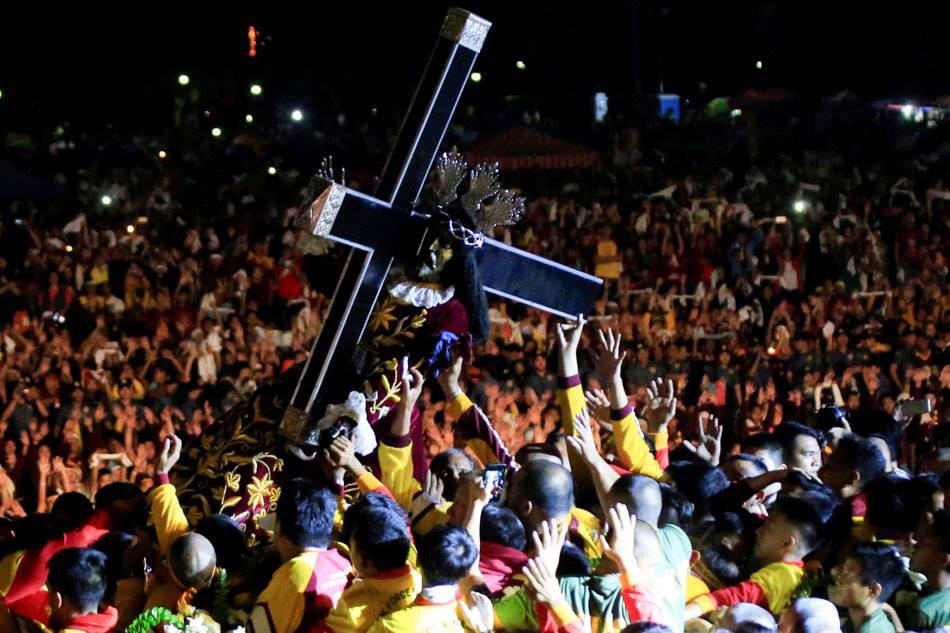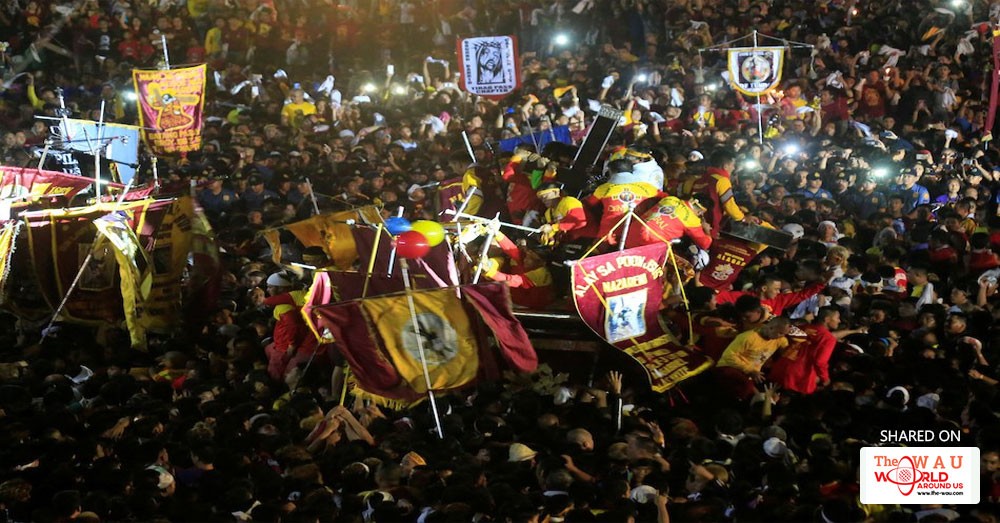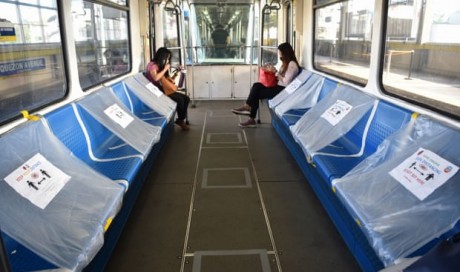A sea of heaving, towel-waving humanity swarmed a black statue of a cross-bearing Jesus Christ in the Philippine capital Tuesday as the Catholic faithful joined one of the nation's largest religious festivals.
In a frenzied display of religious fervor, men, women and children climbed over heads and shoulders and flung themselves at the centuries-old Black Nazarene that they say performs miracles.
Drawn by devotees pulling on thick ropes attached to its carriage, the icon left a central Manila park with 490,000 people in tow waving white towels and chanting "Viva" ("Long live"), Manila police said.
The statue will pass through the streets of old Manila as it is taken to its home in the Quiapo church, a journey that usually takes 20 hours or more and which police said would draw millions of participants.
"It is really tough climbing to get to the Nazarene. I get squished, and people step on my face. But I have a devotion," Honey Pescante, a 24-year-old housewife from Bataan province, told AFP.
The Philippines is Asia's Catholic bastion with a flock of more than 80 million. Spain colonized the archipelago nation in the 16th century and spread the faith.
City officials say about 500 people get injured in the procession each year as pilgrims risk life and limb to touch the icon with towels, believing its miraculous powers will be transferred to the cloth. In 2016, two devotees were killed.

The risky behaviour has drawn frequent criticism in the Philippines, with some saying it resembles pagan worship.
But church officials and sociologists say devotees see the event as a challenge.
"Filipino Catholicism follows the belief that the presence of a higher being can only be made real through the body and via the material," Maria Yohana Frias, an ethnology researcher at the National Museum of the Philippines, told AFP.
"Enduring a challenging procession where devotees walk barefoot is also seen as a test of faith for some."
The Black Nazarene was brought to Manila by missionaries in 1606 and is believed to have survived disasters and calamities.
"Filipinos who come to Quiapo... get a sense of being near the Lord, of the Lord touching them and of the Lord accompanying them... through difficult challenges," Quiapo church parochial vicar Father Marvin Cruz told AFP.
A devotee for 30 years, 61-year-old Julio Castillo watched from the sidelines of the procession Tuesday after both his feet were fractured in a motorcycle accident last month, leaving him in a wheelchair.
"I came here because this is my devotion. I hope my family will have good health and a prosperous life, that we will have no illness and I will heal," he said.
Share This Post












